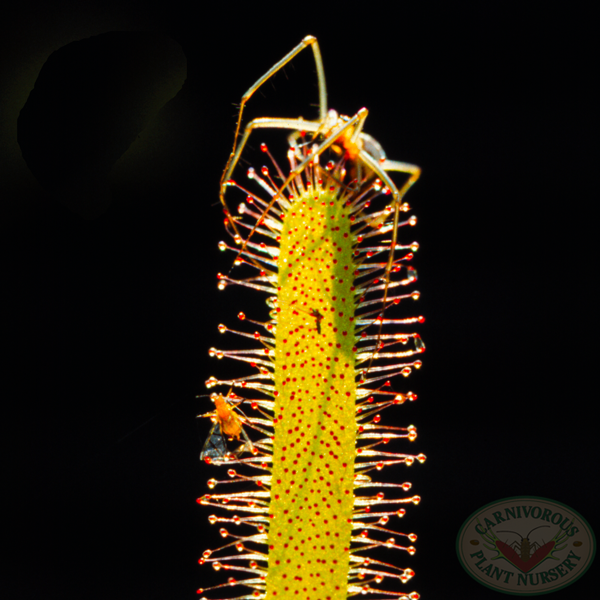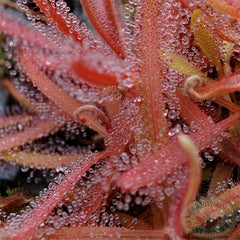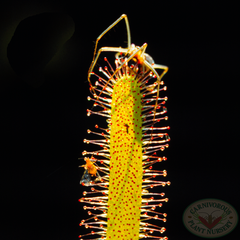
Sundews
Drosera sp.
Sundews are truly beautiful carnivorous plants. Their green and red leaves are covered with glistening droplets of mucilage that sparkle in the sunlight. They are generally perennial herbaceous plants. Germination by seed is easy. Leaf shape ranges from circular to linear and many combinations in between. The leaves are flat and have numerous tentacles or stalked glands on the upper surfaces. There are two types of stalked glands. Those on the leaf margins are longer and help entrap the prey. Those near the center of the leaf are short and also help trap prey, but mainly they secrete digestive fluids. Neighboring tentacles and those in contact with the prey all move towards the victim. Movement of these tentacles results when cells on the far side of the stalk grow faster, thus bending the stalk towards the prey. An auxin (plant hormone) is involved in the cell growth.
There are almost a hundred species of sundews. They are usually quite abundant in appropriate habitats. In some areas the ground is carpeted with these beautiful red, glistening plants. Some species form winter buds or hibernacula in Autumn.
Most sundews are small plants with diameters about the size of quarters. Some are quite small, like the pygmy sundews with diameters under 1/4" (<1 cm). Others, like the Forked Sundews are large and often 6-12+" (15-30+ cm).




